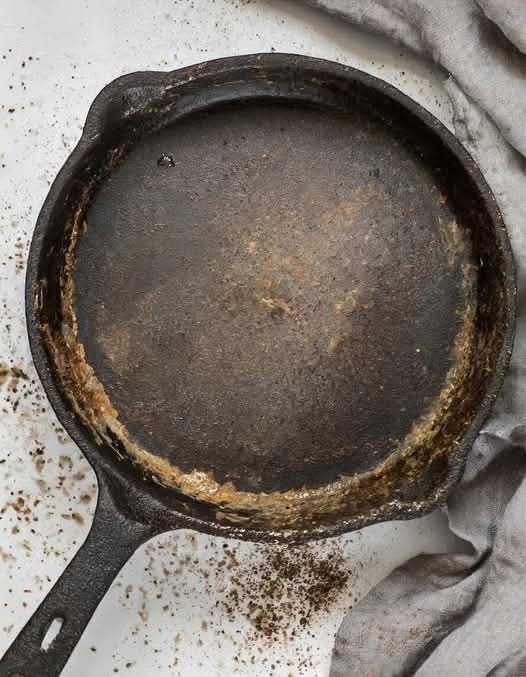ADVERTISEMENT
Folks Often Get It Wrong by Scrubbing Cast Iron Pans with Soap: Here’s the Right Method to Clean Cast Iron Pans
Cast iron pans are a kitchen staple for many, known for their durability, even heat distribution, and ability to create the perfect sear on meats or bake delicious cornbread. However, many people unknowingly make a critical mistake when it comes to cleaning these beloved kitchen tools—scrubbing them with soap. If you’ve been using soap to clean your cast iron, you’re not alone, but you might be damaging the pan in the long run.
In this article, we’ll guide you through the correct method to clean cast iron pans, ensuring they stay in top condition for years to come. Plus, we’ll share some tips for seasoning your pan to maintain its non-stick surface and prevent rust.
Why You Should Never Use Soap on Cast Iron Pans
First things first, let’s address the biggest misconception: soap and cast iron don’t mix. Soap strips away the seasoning on a cast iron pan, which is essentially a layer of oil that has bonded to the pan through heat. This seasoning creates a natural non-stick surface that makes cooking and cleaning easier. When you use soap, it can break down this protective layer, leaving your pan more prone to rust and less non-stick over time.
But don’t worry, cleaning your cast iron pan doesn’t have to be complicated. It just requires a different approach than other cookware.
The Right Way to Clean a Cast Iron Pan
Here’s the step-by-step guide to keeping your cast iron in pristine condition without using soap:
1. Let the Pan Cool Down (But Not Completely)
After cooking, allow your cast iron pan to cool slightly. Don’t let it cool completely because hot water can cause thermal shock, which can warp your pan. But don’t let it be too hot either. Let it cool for a few minutes, just enough so that it’s not too hot to handle.
2. Use Hot Water and a Scrub Brush or Sponge
Once your pan is cool enough to handle, pour hot water into the pan (enough to cover the surface if needed). You can use a scrub brush or a non-abrasive sponge to gently scrub away food residue. For stubborn bits, you can use a wooden spatula or a plastic scraper to loosen any stuck-on food.
If you’re working with sticky or dried-on food, you can also pour some kosher salt into the pan and use it as a scrub to gently loosen the food. The rough texture of salt acts as a natural abrasive that won’t damage the seasoning. Simply add a little water and scrub in circular motions.
3. Rinse and Dry Immediately
Once the pan is clean, make sure to rinse it thoroughly with hot water. Then, dry it immediately with a clean towel or cloth. It’s crucial to avoid leaving the pan wet, as moisture can cause rust. Some people even heat the pan over low heat on the stovetop for a minute or two to make sure it’s completely dry.
4. Apply a Thin Layer of Oil to Re-season
Once your pan is dry, it’s time to re-season it. This is one of the most important steps in maintaining your cast iron pan’s longevity. While the pan is still warm, apply a thin layer of vegetable oil, flaxseed oil, or any other high-smoke point oil to the inside surface of the pan. Use a paper towel to rub the oil evenly over the entire cooking surface, then wipe away any excess oil. The goal is to create a thin layer of oil, not a thick coating.
For Complete Cooking STEPS Please Head On Over To Next Page Or Open button (>) and don’t forget to SHARE with your Facebook friends
